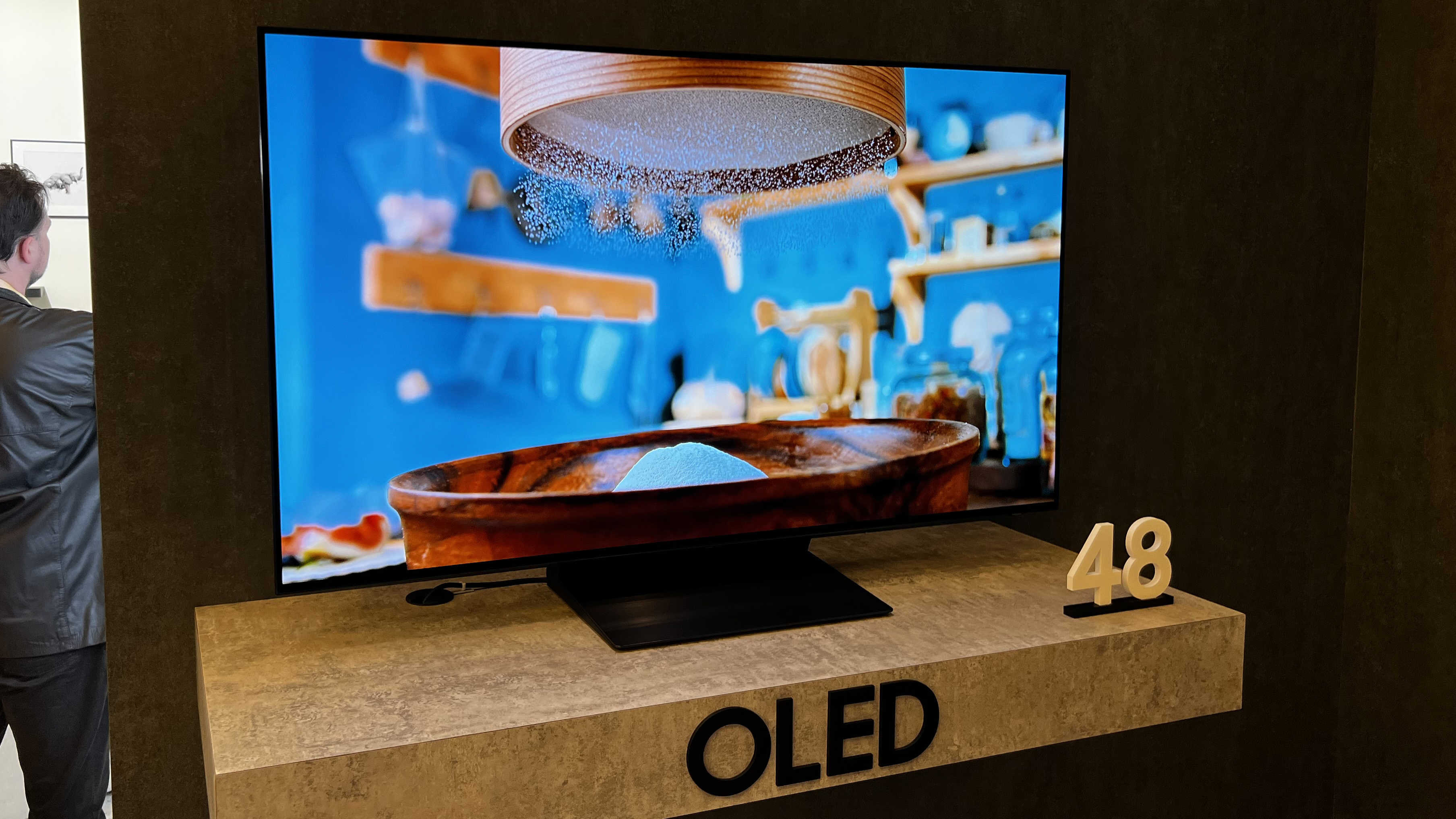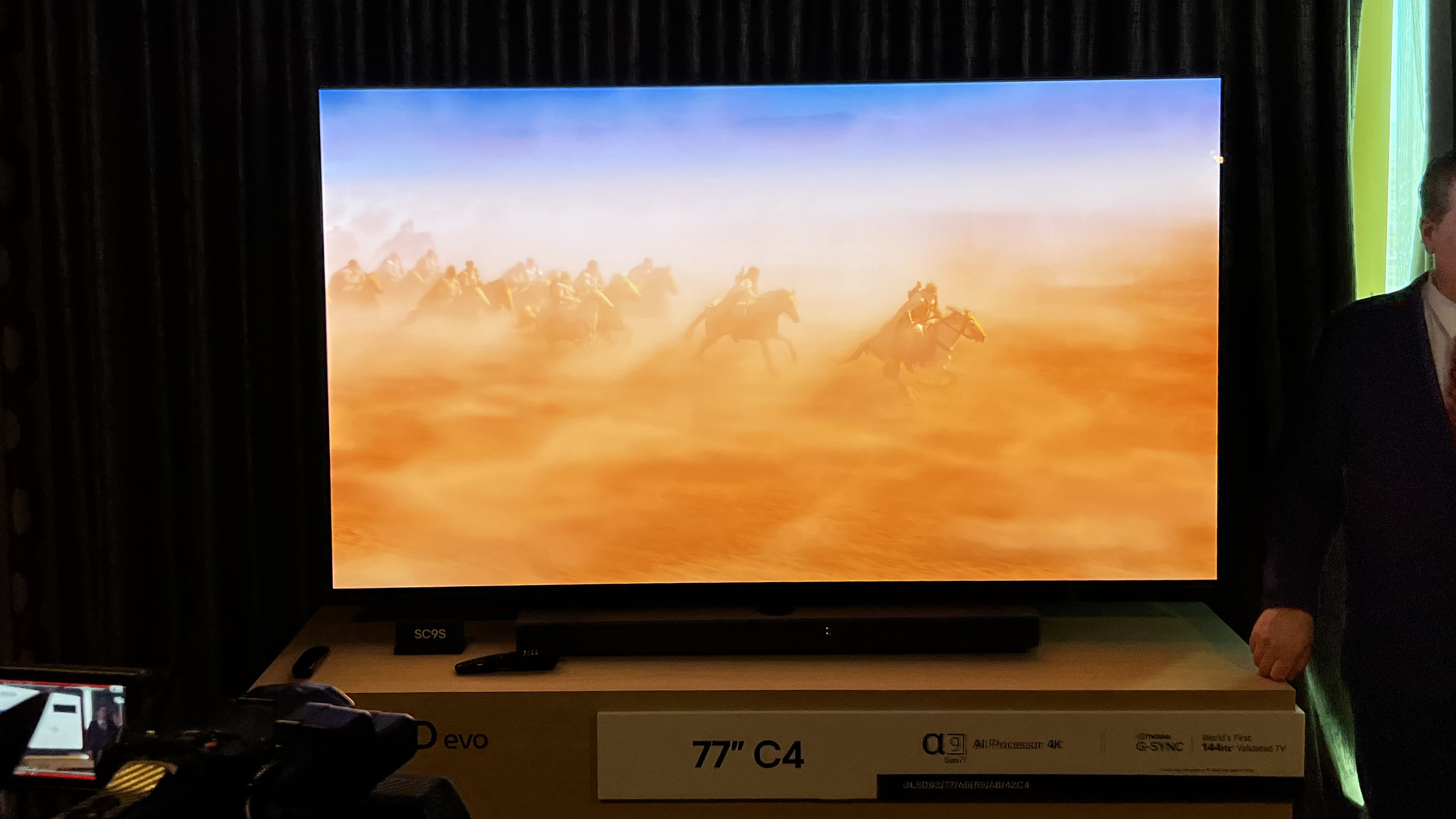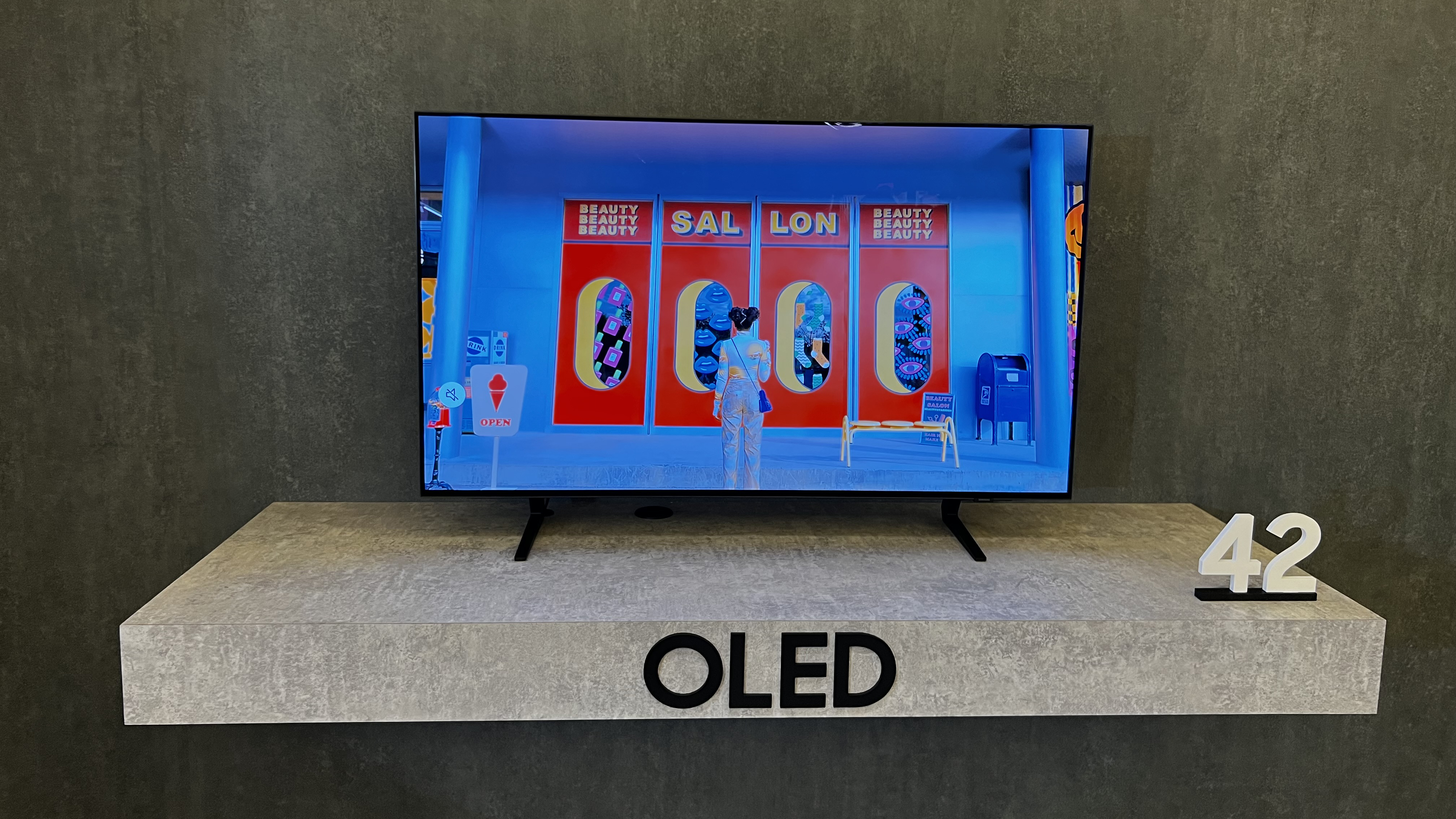LG C4 vs Samsung S90D: how do the top TV makers' mid-range OLED TVs compare?
Should you buy the LG C4 vs Samsung S90D?

LG and Samsung, the world's leading TV manufacturers, unveiled their 2024 line-ups at CES 2024 in January, setting the stage for an exciting year in television technology. While many of their new models are yet to hit the shelves, anticipation is building for what the next 12 months will hold as TV tech advances.
Both brands showcased high-end TVs, like the LG G4 and Samsung S95D. However, this guide focuses on their best mid-range OLED offerings: the LG C4 and the Samsung S90D. These models are brimming with top-tier technology, yet are priced more affordably than their premium counterparts, making them more appealing to most people.
The LG C4 is a mid-range TV and a successor to the LG C3. In 2023 we described the C3 as a "picture-perfect" TV for movies and gaming. With lots of upgrades and improved specs, the LG C4 could easily be a contender for one of the top TVs of 2024.

But it has stiff competition. The Samsung S90D is an upgrade on last year's S90C, which was our top pick for not only the best TV of 2023, but the best OLED TV. The S90D will have a number of upgrades, and during an early demo we were already impressed with its vivid, colorful picture.
We won't know which TV we prefer until we've had some serious hands-on testing time with them both. But, based on what we know so far, how do these two mid-range OLED TVs stack up against each other? And which is likely to be the superior choice, the LG C4 vs Samsung S90D?
LG C4 vs Samsung S90D: Price and release dates
Neither LG or Samsung has revealed official details about pricing or release dates of their new mid-range OLED TVs. But we can make a few assumptions based on the TVs that came before them.
Historically, LG announces the prices of its new TVs close to launch, which we expect to be in spring 2024, around March or April. Until then, we can look at the price of the LG C3 to give us a good idea of what to expect. The LG C3 cost:
Sign up for breaking news, reviews, opinion, top tech deals, and more.
- 83-inch: $5,299 / £6,499 / around AU$7,900
- 77-inch: $3,599 / £3,999 / around AU$5,370
- 65-inch: $2,600 / £2,899 / around AU$3,900
- 55-inch: $1,899 / £2,099 / around AU$2,830
- 48-inch: $1,499 / £1,599 / around AU$2,240
- 42-inch: $1,399 / £1,499 / around AU$2,100
The higher-end LG G4 and LG M4 TVs will come in a large 97-inch size as well, but the C4 is going to range from 42- to 83-inches, like the C3.
The Samsung S90D is also likely to fall in a similar price range to its predecessor, the Samsung S90C. It may also arrive a little later, in mid-2024. The S90C cost:
- 55-inch: $1,599 / £1,799 / AU$3,299
- 65-inch: $2,099 / £2,499 / AU$4,299
- 77-inch: $3,199 / £3,599 / AU$6,799
- 83-inch: $5,399
In 2024, Samsung will introduce two new sizes of the S90D, the 42- and 48-inch models. These are likely to be cheaper than their larger counterparts, especially as we know that these smaller sizes use regular W-OLED panels as opposed to QD-OLED panels, but it's hard to say by how much.
LG C4 vs Samsung S90D: Features

We know that the LG C4 will get a next-gen version of LG's Alpha 9 processor that was in the C3 that came before it. LG says that this chip will improve processing power, as well as give a boost to peak brightness levels, especially compared to the C3. Other notable features thanks to this new chip include support for AI Picture Pro and AI Sound Pro technologies.
The LG C4 will support 4K 144Hz refresh rate, which is compared to the 120Hz in the LG C3. It will also be AMD FreeSync and Nvidia G-Sync certified, have four HDMI 2.1 ports and LG's Game Optimizer menu. Many of these features are also in the higher-end LG G4 and even the LG M4. Making the LG C4 a really appealing proposition – especially for gamers. The LG C4 will also support HDR10 and HLG HDR formats, as well as Dolby Vision.
It's hard to make a direct comparison between the two new TVs when we don't have all of their specs yet. But the Samsung S90D is offering up increased brightness and smaller-sized models compared to the S90C that came before it. But other than that, we can expect many similar features to the S90C. Especially when it comes to gaming, including four HDMI 2.1 ports, support for 144Hz refresh rate, AMD FreeSync Premium and more.
One new feature on the Samsung Game Bar in the S90D is called Auto AI mode. This uses AI to analyze what genre of game you're playing and it'll then adapt settings, including picture and motion accordingly for the best experience. Like the LG C4, the Samsung S90D is a good gaming TV. It also supports HDR10+, HDR10 and HLG HDR formats. But, like all TVs from Samsung, it doesn't support Dolby Vision.
LG C4 vs Samsung S90D: Picture quality

We’ll have to see the nuances of the picture quality on offer from the LG C4 and Samsung S90D ourselves to make a final judgement.
But based on what we know so far, the C4 has a next-gen OLED Evo panel and the next-gen chip we mentioned above. This means we can expect picture quality from the LG C4 that's brighter and more vibrant than the C3 that came before it – this now applies to all sizes of the C4, even the smaller 42-inch and 48-inch models.
Although we haven't had hands-on testing time with the LG C4 we have seen it in person and can confirm the brightness boost is very much real – we haven't had official confirmation on this yet but thought it looked capable of hitting 900-1,000 nits in the larger sizes.
The biggest difference between the Samsung S90D and last year's S90C is that Samsung says the S90D QD-OLED will be 20% brighter. However, not all S90D models will have a QD-OLED panel, only the 55-, 65- and 77-inch sizes. The smaller sizes will use the standard W-OLED panels developed by LG, as will the massive 83-inch version.
We saw the S90D in person at CES and we were impressed with the vivid, coloful picture. The S90C QD-OLED that came before it had a peak brightness of 1,100 nits compared to the W-OLED LG C3, which had a peak brightness of 800 nits. It'll be interesting to see whether the S90D and LG C4 fare the same.
LG C4 vs Samsung S90D: Sound quality

The new Alpha 9 chip doesn't just add a performance boost and a brightness boost to the LG C4, but it also brings LG’s AI Sound Pro tech to the panel. This feature upmixes audio into different virtual channels, optimizing sound to better suit what you’re playing and watching.
The new processor also gives the LG C4 the ability to pair with a compatible LG soundbar and get wireless, lossless Dolby Atmos audio, which is a big deal for those who like the best and purest audio.
We don't know much about the sound on offer from the Samsung S90D yet. But it's worth mentioning that last year in our Samsung S90C review we said the audio quality on offer beat both the LG C3 and G3 OLED TVs.
LG C4 vs Samsung S90D: Verdict

We'll need to test both the LG C4 and Samsung S90D before we can draw conclusions about which is the better OLED mid-range TV and the kind of viewer each one would suit the best.
The Alpha 9 chip in the LG C4 is going to be bringing a performance, brightness and audio boost to the mid-range LG TV that could make it a solid choice and one of the best TVs of 2024.
But the Samsung S90D builds on the success of the S90C, which was a big winner in 2023. We'll get full pricing details and hands-on reviews soon.
You might also like

Becca is a contributor to TechRadar, a freelance journalist and author. She’s been writing about consumer tech and popular science for more than ten years, covering all kinds of topics, including why robots have eyes and whether we’ll experience the overview effect one day. She’s particularly interested in VR/AR, wearables, digital health, space tech and chatting to experts and academics about the future. She’s contributed to TechRadar, T3, Wired, New Scientist, The Guardian, Inverse and many more. Her first book, Screen Time, came out in January 2021 with Bonnier Books. She loves science-fiction, brutalist architecture, and spending too much time floating through space in virtual reality.